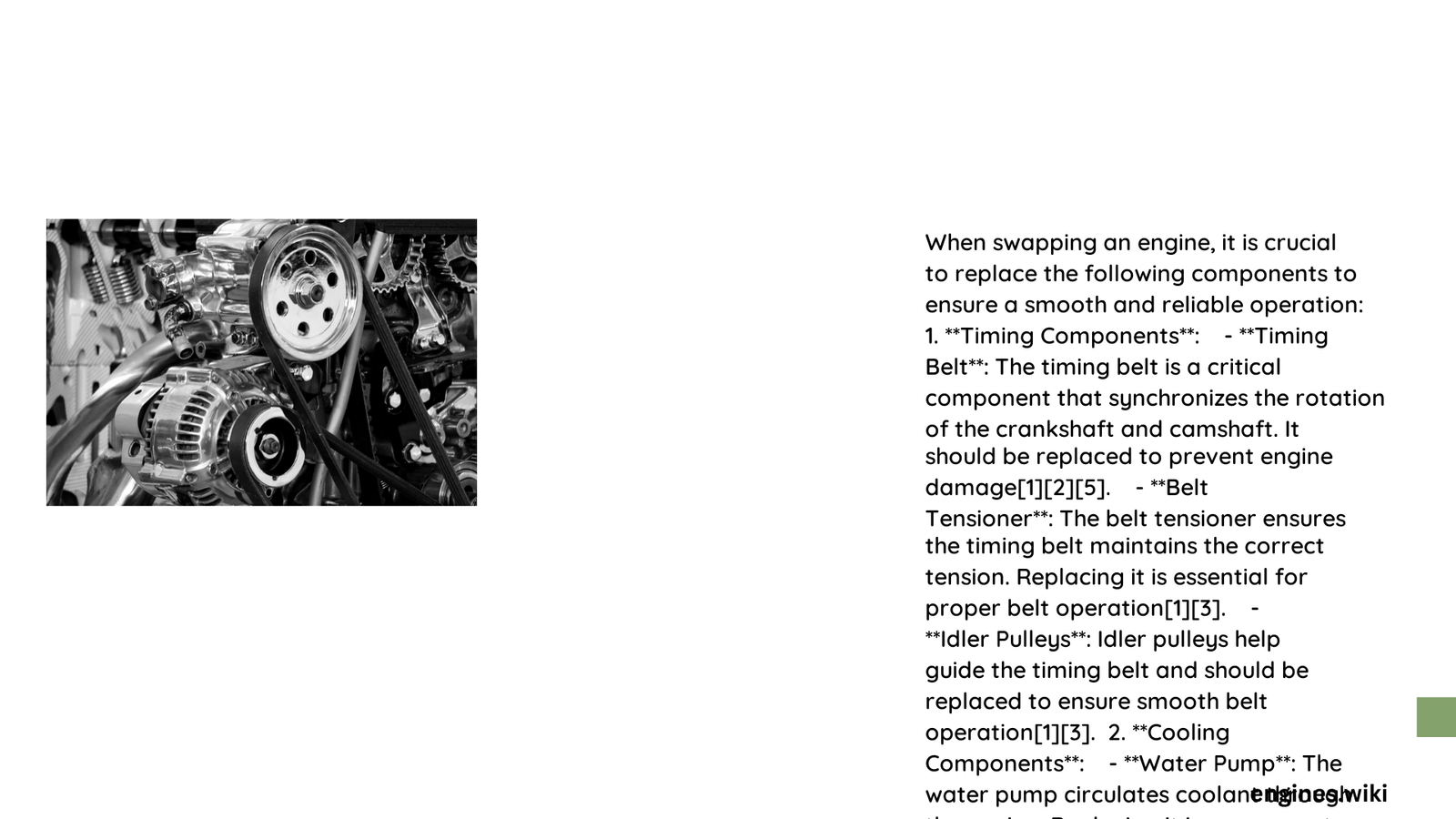Engine swaps are complex automotive procedures requiring meticulous component replacement to ensure optimal performance and compatibility. Mechanics and automotive enthusiasts must carefully evaluate and replace multiple interconnected systems, including mounting hardware, electrical components, fuel delivery mechanisms, and cooling infrastructure. Understanding the precise requirements for each system is crucial to prevent mechanical failures and maintain vehicle reliability during a comprehensive engine transformation.
What Components Need Replacement During Engine Swap?
Why Replace Engine Mounts?
Engine mounts are critical connection points between the new engine and vehicle chassis. Key considerations include:
- Material Durability:
- Rubber mounts: Provide vibration absorption
- Polyurethane mounts: Enhanced performance and longevity
-
Hybrid designs: Balanced performance characteristics
-
Torque Specifications:
- Typical range: 30-50 ft-lbs
- Vehicle-specific requirements
- Precision installation critical
What Electrical Systems Require Modification?
Wiring Harness Considerations
| Component | Replacement Requirement | Specification |
|---|---|---|
| Pin Configurations | Must match new engine | Custom adapters often needed |
| Wire Gauge | Appropriate current capacity | Thicker wires for high-draw components |
| Connectors | OBD-II and ECM compatibility | Specialized adapters required |
How to Handle Fuel System Components?
Fuel line replacement involves:
- Diameter Measurements:
- 5/16″ lines
- 3/8″ lines
-
1/2″ lines
-
Material Selection:
- Stainless steel
- High-grade rubber
- Corrosion-resistant materials
What Coolant System Elements Need Replacement?
Coolant hose specifications include:
- Diameter matching (1.5″ – 2″)
- Heat-resistant materials
- Proper clamp and fitting compatibility
Additional Critical Replacement Components
- Ignition System:
- Spark plugs
- Ignition wires
-
Timing components
-
Sealing Components:
- PCV valve
- Oil seals
- Gasket replacements
Technical Considerations for Successful Swap

Successful engine swaps demand:
– Precise measurement
– Compatibility verification
– Professional assessment
– Systematic component replacement
Expert Recommendations
- Consult vehicle-specific service manuals
- Use specialized engine swap kits
- Verify all electrical and mechanical interfaces
- Professional diagnostics recommended
Potential Challenges
- Complex electrical integration
- Precise mounting requirements
- Performance calibration
- Cost of specialized components
Cost Considerations
Average engine swap component replacement ranges:
– Engine mounts: $200 – $500
– Wiring harness: $300 – $1,000
– Fuel system components: $150 – $400
– Coolant system: $100 – $300
Final Technical Assessment
Comprehensive engine swaps require methodical approach, technical expertise, and thorough understanding of automotive systems integration. Each replaced component contributes to overall mechanical harmony and performance reliability.
Recommended Tools
- Torque wrench
- Multimeter
- Specialized adapter kits
- Diagnostic scanning equipment
Reference:
- [Automotive Technical Manual]
- [Professional Mechanic’s Guide]
- [Engine Swap Specialist Resources]
